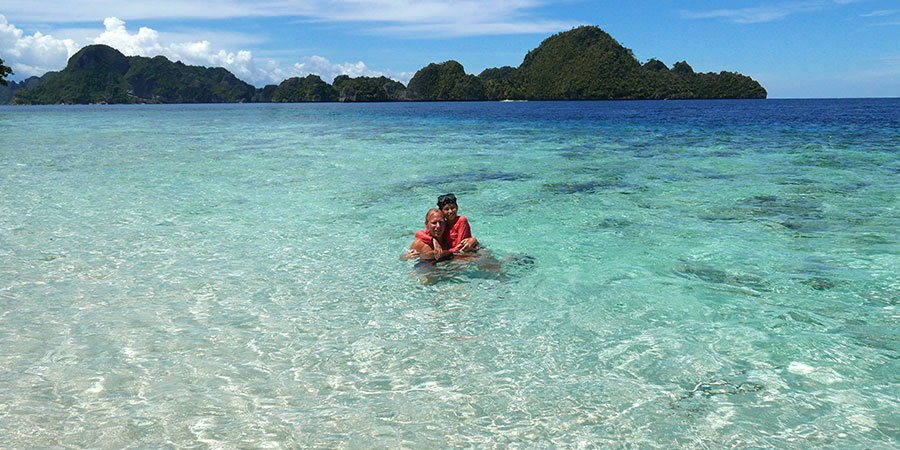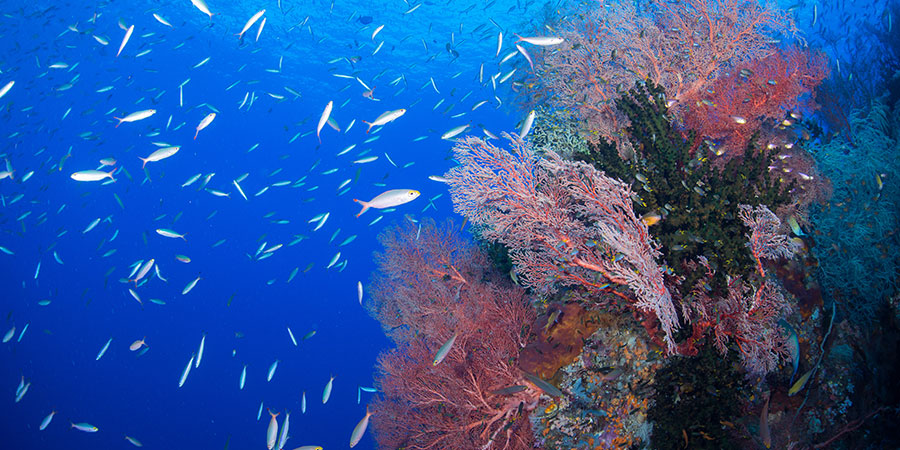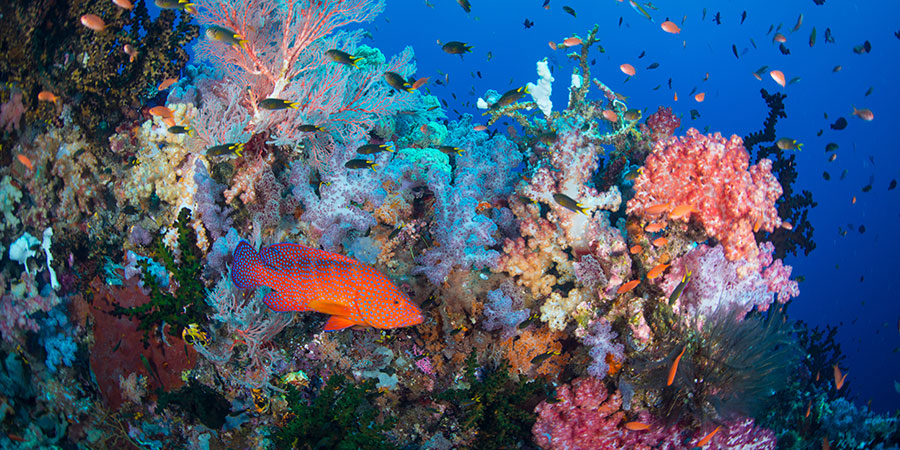Christmas in Raja Ampat
Christmas in Raja Ampat
The Zabriskie family has a sense of adventure and love of the sea. They explored over 400 nautical miles of Raja Ampat from North to South on their 16-day safari onboard of our yacht, Sequoia. It is a remarkable journey exploring the vital relationship creatures living below the sea.

Raja means “King”, while “Ampat” means four. According to the legend, eggs laid by a mega bird of Waigeo hatched into four fabled kings who settled the region’s four biggest islands from north to south; Waigeo, Salawati, Batanta and Misool.

At 23 feet under the blue water, 4 majestic manta rays welcomed us to our first dive at Batanta, 46 nautical miles north east of Sorong. With a wingspan of over 17 feet, they gracefully swept in and around us as if they were floating on air. This infrequently visited location is known as the manta “cleaning station” where mantas and sharks get their skin and gills cleaned by parasitic copepods and wrasse fish. This cleaning can go on for many hours as the mantas glide in a circular motion as the cleaning takes place.

We continued our journey for the next 5 days on Waigeo Island, from Fam to Gam. Our senses were on overload. There were views of scenic green islands towering tall imitating the jungle of Papua as we watched the flight of shore birds where school fish are busy underneath the blue. It truly is a lush paradise.

It was a Christmas Eve as our crew prepared a special dinner on beach. The remote beach was transformed by 100 candles into a beautiful twilight restaurant. Our Chef made a family Christmas dinner favorite: grilled King prawn with Potatoes Gratin and Klappertart, a north Sulawesi baked coconut dessert. It was a beautiful night where stars shining in the dark blue sky where the family enjoyed the greatest give of all; togetherness in this remote paradise.

There are over 100 villages in Raja Ampat, where locals live their simple but happy life. Each village has jetty that connect their land to boats that supply fresh fish. The jetties are made of wooden piles that are covered in coral making them a spectacular aquarium for large fish. The jetties of Mansuar Island are spectacular. It feels like entering Disney cartoon movie with schools of batfish, sweetlips, and napoleon wrasse.

After one incredible week in north of Raja Ampat, Sequoia sailed 100 nautical miles south to Daram Islands. Daram is the eastern most Island of Misool. North Raja Ampat is more known for hard coral gardens, amazing manta dives and sharks while the South tends to have more walls with amazing sea fans and soft coral.

From Candy Store to Wedding Cake dive sites, Misool underwater is simply breathtaking. Once underwater, submerged pinnacles will surround you where huge sea fans and beautiful soft coral are filled of schools of fusiliers, butterfly fish, barracuda, bump head parrotfish, and batfish. Unique underwater fish are also found here from Wobbegong shark, cat shark to crocodile fish. If you want to see tiny critters, you can spot pigmy seahorses living on sea fans as well as camouflaged crabs and mantis shrimp.

One week in Misool was full of new experiences. We watched patrolling big eye trevallies, surrounded by millions of fish in Fiabacet Island and then used the kayaks and SUP in Balbulol Lagoon. We swam with stingless jellyfish at Farondi followed by dinner watching the full moon above the blue sky and calm sea. We now could say, we did it all. It is priceless.

Food is heaven on Sequoia. Chef Wayan and his kitchen team made everything from scratch from pasta to ice cream. Our favorite is his classic chocolate chip cookies. We loved food as much as the diving. Our masseuse Rio was always available onboard to relax our muscles after busy day exploring the islands and exploring the underwater magic of Raja Ampat.

The ocean covers more than two thirds of the earth surface. The earth will not survive without healthy oceans. While many areas of the ocean are being threatened by coral bleaching, here at Raja Ampat the underwater remains healthy. We witnessed something truly majestic: explosions of colors and underwater life. The question is how long it is going to last. It is our responsibility to keep it last to the next generations to come.
